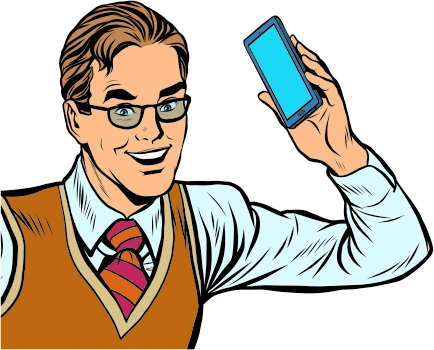Interview with Cindy “Hank” Schlueter of Viper Tradeshow Services
 Cindy “Hank” Schlueter is Vice President – Marketing with the national decorating company Viper Tradeshow Services. Hank has made it her mission to challenge exhibitors and associations to think outside the traditional confines of trade shows to collectively build exciting and fun educational environments for attendees. She has chosen to lead by example providing complimentary brainstorming and creative solutions as an enhancement of the full service decorator portfolio her customers would expect.
Cindy “Hank” Schlueter is Vice President – Marketing with the national decorating company Viper Tradeshow Services. Hank has made it her mission to challenge exhibitors and associations to think outside the traditional confines of trade shows to collectively build exciting and fun educational environments for attendees. She has chosen to lead by example providing complimentary brainstorming and creative solutions as an enhancement of the full service decorator portfolio her customers would expect.
We recently spoke with Hank and asked her to share her perspective on what works and what doesn’t for brands who are exhibiting at trade shows. Here is a summary of that conversation:
SOBO: First off, what is your current role, and how long have you been doing it?
Schlueter: I am the VP of Marketing at Viper Tradeshow Services. I have been with Viper for 11 years, and in the industry for 25 years. My focus is on helping our show management customers produce great trade shows.
SOBO: What actions should an exhibitor take prior to a trade show to maximize its chances for a successful show?
Schlueter: Most of the shows I am involved in include some sort of educational focus. Exhibitors need to get as up-to-date as possible with current information on the topic at hand, and then tailor their messaging as it relates to that topic. The exhibit is a complement to the conference, not a “shopping mall.” It’s not about the exhibitor’s sales goals; it’s about what value the exhibitor can provide to the show’s attendees.
SOBO: What are the best-practices for following up after the show?
Schlueter: I see this all the time: attendees would like you to contact them via their preferred method, but rarely do exhibitors ask for what that preference is. So go ahead and ask the people who visit your booth, “How would you prefer that I follow up with you? Should I email you or would you rather I call you?” Then be sure to record and remember what that preference is and follow through on what you say you are going to do. If you are unable to get that information at a busy, hectic booth, send a personal, handwritten note. In either case, it’s about connecting with that person in a personal way. This means no blast emails, ever. It’s all about building “rapport, rapport, rapport.”
SOBO: What are some of the more creative uses of promotional products that you have seen exhibitors deploy successfully at trade shows?
Schlueter: Exhibitors need to take the time to understand the audience, watch for trends, and attempt to stay ahead of those trends. For example, the audience at the educational shows loves T-shirts, whereas those do not do nearly as well at professional shows.
One promotional product that sticks out in my mind is a pen/stylus combo that my young, tech-savvy daughter (who works with me) received at a trade show she attended. She knows off the top of her head which company gave her that product a year after the fact not because of the logo on the stylus, but because it made an impression on her that a company was smart and with-it enough to give her what instantly became a favorite product. She still remembers their booth. That is successful tradeshow swag.
Another thing to think about is where it will ultimately end up. Don’t put your logo and spend money on products that attendees will just give to their kids. I still have a pizza cutter and a jar opener at home that I received at trade shows, but I don’t remember who gave them to me. That’s because they weren’t relevant to the message those companies were trying to convey. Associating a product with the memory of the brand at the trade show can work, but only if the product is relevant to the message and the brand. I’m a big fan of clever slogans that are tied to a larger theme, and then to promotional products. A successful promotional product requires creativity and tying everything together into a cohesive, memorable message.
QR codes on promotional products are a creative way to tie in additional content and messaging. Just make sure you don’t put it on the back where nobody will ever see it. I once got a really handy pack of Post-It Notes, but the company put their QR code on the back. That company never got the leverage they could have gotten by putting it on the front.
SOBO: What are some things exhibitors need to START doing at trade shows?
Schlueter: (1) Learn (or re-visit) the art of sales, learning about customers, developing a rapport, and understanding the dynamics of who the decision-maker is.
2) Tie together the message, the promotional products, QR codes, augmented reality into a cohesive, memorable theme.
(3) Have FUN by carrying that theme through to offsite events to continue the conversation. People go to trade shows to have fun and make friends. You want to be the one with the answer to the question “Where’s the party tonight?”
(4) Do your homework by understanding the ROI of the show. You know how much you are spending, so how many sales will allow you to break even? How many qualified leads do you need to yield that number of sales? Depending on the industry, the number of sales required to pay for the show may be less than you think. Too many exhibitors I talk to make negative knee-jerk reactions about the success of a show without considering their long sales cycles or the number of sales required to make it worthwhile.
(5) Coordinate your exhibiting team so that marketing, sales, and creative are on the same page with what the goals are. Having one dynamic leader quarterbacking the team can help eliminate the silos and lead to a more consistent message.
SOBO: What should exhibitors STOP doing at trade shows?
Schlueter: (1) Doing the same thing and expecting the same results. Too much of the trade show industry has started to settle for mediocrity. This presents a real opportunity for creative companies with new ideas.
(2) Bringing your smartphones and laptops to the show floor. Nothing is more off-putting than seeing a booth full of the employees of an exhibitor in their booth with their heads in their phones. It sends a clear message that the world outside the event hall is more important than the world inside it, even though that’s where the potential customers and partners are. You are there to meet face-to-face with people whose problems your company’s products may be able to solve. But it’s impossible to build the necessary rapport to help them if you are not fully present and engaged. The only time a cell phone may be appropriate on the show floor is if an exhibitor needs to be available for pressing child care needs or other types of family emergencies.
SOBO: Is there anything else that you counsel your exhibitor clients to do that we have not yet asked about?
Schlueter: I know marketing and promotional budgets are tight these days, but I would add that it’s not necessarily about spending more money. You can see more ROI by spending the money you do have in smarter ways. Calculate ROI and define success metrics. Appoint a dynamic leader with the responsibility for coordinating the exhibition team and achieving those goals. Think about how to link your promotional products to a cohesive theme. Have fun, get off your smartphone, make friends, build rapport, and make a lasting impression. These things cost about the same whether you execute well or execute poorly. So invest a little time and thought into being creative, being interesting, and not accepting mediocrity.
Also, try to get outside your company and connect with people on a personal level. Reach out to new attendees by buying them coffee and helping them make contacts. Remember that people don’t care how much you spent on your booth; they care about how you can help solve their problems. If you consistently bring intrinsic value to the events you attend, it will start to show up in your bottom line.






Stay Hip to the Latest SWAG Trends - Sign Up For Our Newsletter!